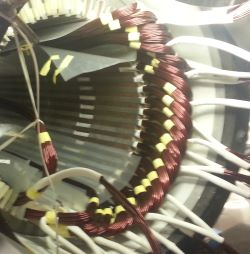- Home
- Training Courses ▼
- Advanced Motor Design
- Application of Industrial Motors, Drives and Transformers
- Electric Motor Technology for Non-Engineers
- Induction Motor Design
- Motor Manufacturing Methods
- Permanent Magnet AC Motor Design--BLDC/IPM/SMPM
- Reluctance Motor Design- Switched & Synchronous Reluctance
- Single Phase Induction Motor Design
- Thermal Design of Motors
- Winding 3-Phase Motors--Hands-On Part1
- Enroll Now
- Design of Electric Machines ▼
- Prototyping and Testing ▼
- Store
- Calendar of Events
- Careers/Additional Resources
- Contact
About Us
3-Phase Winding WorkBench Training -- Part 1
Hands-on, at the Bench, Instruction and Practice
Next Offering:
Dates:
TBD: Target mid/late 2021
Location:
LIVE, ONLINE
Email us at
Training@AdvancedMotorTech.com
First ever offering, stillunder development--
the training content and agenda is still evolving
Winding is a craft that comes from experience, and no other way.
We will bring prepared stators, supplies and tools, ready to practice the next task
This Hands-on course begins to address the need for industrial and traction motor Winder training.
This first edition is planned to be a 2-day course.
The intended audience are those needing to learn how to prepare and wind a 3-phase electric motor. This is especially valuable
for new winders, managers without bench experience, motor sales and customer service staff, suppliers to motor manufacturing and rebuilder businesses.
The training is intended to extend and add to currently available technical software and videos by providing personal attention, ability
to demonstrate and give how-to tips, delivered by experts with many years of experience. The course will be 100% original
content created and produced by Advanced MotorTech LLC.
This will be training using the "actually-doing-it" experience that can't be obtained any other way.
Some topics:
How to count turns--not as easy as it seems.
How to measure wire with the gauge when it is not clear what the wire size is.
What to do about the cross-over wire.
What is the right fit for slot liner.
How to cut insulation straight--harder than anyone thinks, but so important!
Choose right size and length of dividers and wedges.
Sizing and fitting phase paper.
Sizing wire for easy insertion (non-binding with 2 wires is only part of the story).
Sample coil fit, where the coils sides should lay and checking end-turn length
How to insert a properly designed coil.
Proper tamping--not too loose, not too tight.
Inserting Wedges--Also: not too loose, not too tight.
And more, and more.
Maybe reserved for Part 2 Course:
Picking correct coil leads for splices--and how to check.
Making a good twisted pair for the splice.
Choosing splice length and postion
Choosing lead wires length andposition
Insulating splices
Lacing--how much is enough?
Surge testing
Masking for Resin Dip
Picking the right hand-tools, and how to care for them.
And more, and more.
And variations of each based on materials, fits, sizes.
The fundamental essence and value of this training is the real-life, physical hands-on experience of
actually doing it, and learning the ins and outs of doing it right, what can go wrong, how to recognize and avoid errors.
Advanced MotorTech, LLC 6822 22nd Avenue North -- Suite #265, St. Petersburg, FL 33710 - 3918 USA
Phone: 727- 412-8200 Sales@AdvancedMotorTech.com
Copyright © 2019 Advanced MotorTech LLC. All rights reserved
